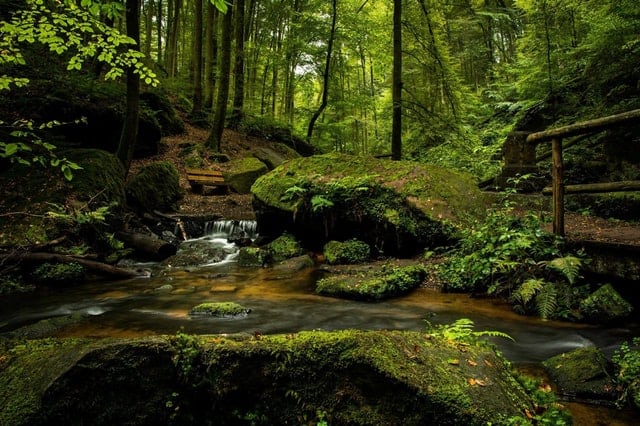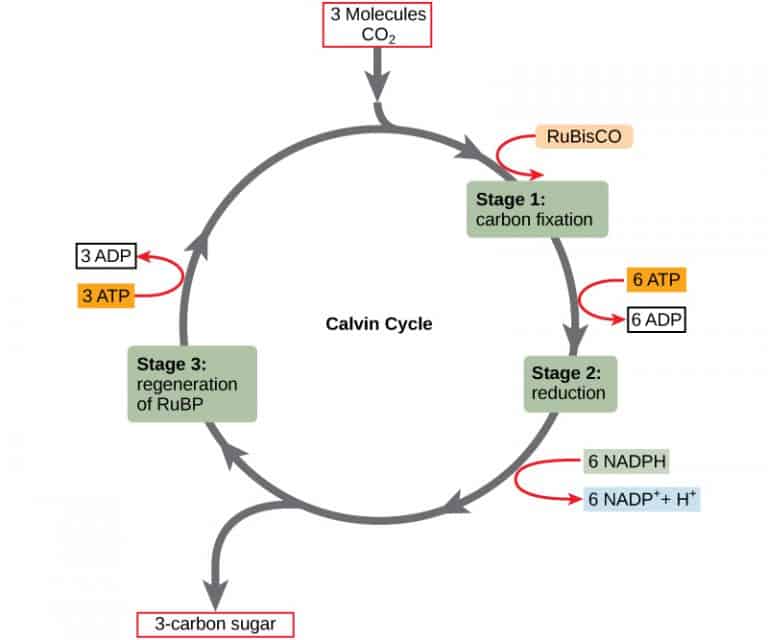25+ Fascinating Rainforest Facts For Kids You Must Know

By definition, rainforests are woodlands characterized by lush vegetation and comparatively high temperature and rainfall throughout the year. The rainforest represents the world’s most biologically diverse ecosystems ever to be spotted on Earth!
Although the rainforest region accounts for less than 7 percent of the land surface on Earth, it contains more than 50 percent (conservatively) of the plant and animal species found on Earth. Here are 25+ interesting facts about the rainforests.
25+ Fascinating Rainforest Facts For Kids
Fact 1: Before a forest can be classified as a ‘rainforest,’ the forest must have a closed canopy in which the treetops (or crowns) touch each other, creating a shaded forest interior. Again, the temperature and rainfall must be high and relatively even throughout the year. Examples of forests that meet these criteria can be found at the flanks of the equator in Asia, Africa, South, and Central America and South America.
Fact 2: The largest rainforest in the world is situated in South America in a vast, forested area of the Amazon River basin in Brazil and its neighboring countries. The rainforests encompass more than 3.5 million square kilometers, which represents about half of the total global rainforest cover!
Fact 3: In Asia, the largest of the rainforests are situated along the Malay Archipelago (including the islands of Borneo and Sumatra, the Republic of the Philippines and the Malay Peninsula) and the island of New Guinea, including Northern Australia.
Fact 4: On the African continent, most of the rainforest is concentrated along the Atlantic coast and the Congo River basin, whereas, in most regions of the Northern and Southern hemispheres, only small areas of the temperate rainforest is situated along the coasts where rainfall and humidity are high and humidity is mild. Typical examples include The rainforest in Southwestern Canada and Pacific Northwest of the United States of America.
Fact 5: The rainforests have been proven to play a critical role in global climate regulation. They do this by absorbing carbon dioxide (a greenhouse gas), which is believed to be principally responsible for global warming. The plants and trees in the rainforest naturally absorb the carbon dioxide given off by man and other activities and release oxygen into the environment as they undergo photosynthesis.
Interestingly, plants and trees in the tropical rainforests absorb more carbon dioxide than any other terrestrial ecosystem on Earth!
Fact 6: The rainforest is home to many plant and animal species. A study expedition into a single rainforest found that there are more species of ants living in a single rainforest stump than exist in all of the British Isles! Amazing!
Fact 7: More often than not, rainforests are usually hot and steamy. In fact, the average annual temperature has been put at about 25 degree Celsius (approximately 77 degrees Fahrenheit). This temperature is fairly constant all through the year, since, the temperature near the equator does not change significantly throughout the year.
Fact 8: The average minimum monthly temperature in a rainforest is 18 degree Celsius (approximately 64 degrees Fahrenheit).
Fact 9: Rainforests are usually absent where the temperature goes below or gets close to 0o This is because the plants and animals which are usually found in rainforests are not well adapted to withstand frost!
Fact 10: The altitude of a rainforest and distance from the equator determine the temperature in a rainforest. It, therefore, follows that, as elevation increases, night time temperature decreases significantly, which in turn affects the forest’s ecology.
Fact 11: True rainforests are usually not above 1,000 meters (approximately 3,280 feet).
Fact 12: In true rainforests, there are no dry seasons! More than a hundred (100) millimeter of rainfalls every month (equivalent to about 4 inches of rainfall). Occasional cases of dry seasons are usually short and unpredictable.
Fact 13: While rainfall evaporation is carried to other (distant) places to fall as rain in most climates, nearly 50 percent of precipitation in the rainforest comes from local evaporation (generated within the rainforest itself).
Fact 14: Usually, much light does not reach the rainforest floor. Therefore, the ground in rainforests is often bare (since little plants would not be able to produce their food from photosynthesis in the absence of energy from the sunlight). Also, the soil is usually hard and deficient of nutrients.
Fact 15: The rainforests have been proven to be very productive! Much of the food we love come from the rainforest. Think of Pineapple, Chocolate, Cinnamon, Rubber and Medicines – They all come from the rainforest!
Fact 16: In a typical rainforest, you might find as many as 300 species/types of trees. In fact, one small segment of the rainforest could contain more frog species than all the frogs in North America!
Fact 17: In most rainforests, some places within the forest get at least one (1) inch of rain or more per day! Little wonder why there are so many species of plants and animals blooming exuberantly in the rainforests.
Fact 18: Rainforests hold more than two-thirds of the world’s plant species! This could be attributed to the favorable plant growth environment the rainforests offer.
Fact 19: Rainforests are remarkably uniform in their general appearance. The general characteristics are as follows: Majority of the trees have tall, slender trunks that do not branch until near the crown. Many of the trees (such as Kapok trees) are supported by thick buttresses which can stretch up to 10 meters (approximately 33 feet) or more.
Fact 20: The barks of trees in rainforests tend to be thin and smooth. A typical exception is the Palm tree (whose bark does not follow the described trend).
Fact 21: Many plants in the rainforests tend to have large leaves (particularly those of the understory and midstory sections e.g Banana tree). The large leaves are necessary to capture as much light as possible (since most of the light is usually intercepted by the leaves of much taller trees).
Fact 22: As trees grow larger within the rainforest, the leaves tend to get smaller. Therefore, the leaves some juvenile (small) plants may be almost 10 times larger than the leaves on adult trees of the same tree species!
Fact 23: The largest flower in the world – The giant rafflesia flower (Corpse lily) is housed in the rainforest. The flower weighs up to 7kg (approximately 15 pounds) while its petals span almost 1 meter (approximately 1 yard). The flower is well known for its putrid smell (which attracts flies as its pollinators).
Fact 24: Climbing plants (such as Rattan palms) are abundant in rainforests. The thick, woody climbers (about 25cm in diameter) are usually found connecting the trees, ascending up into the treetops and looping downwards.
The climbing plants expend less energy and time in growing, as the support system (for exposure to sunlight and adequate rainfall) needed for their growth is provided by climbing other trees within the rainforest.
Fact 25: Some plants in the rainforest are described as ‘strangler figs’. The strangler figs begin their lives as epiphytes, they germinate in the canopy trees and send roots down to the soil. With the continued growth of the strangler figs, they enwrap their hosts and literally strangle the host tree to death! The strangler figs then become free-standing trees!
Fact 26: Since epiphytes (including bromeliads, mosses, and orchids) cannot produce their food by themselves (they do not have roots), they often depend on living plants for nutrient and water. Usually, the association is not parasitic.
Fact 27: The four major levels in a rainforest are: The emergent layer (The topmost), The Canopy layer, The Understory and The forest floor (Lowest level).
References:
- Losos, Elizabeth. “Rain Forest.” Microsoft® Encarta® 2009 [DVD]. Redmond, WA: Microsoft Corporation, 2008.
- https://www.natgeokids.com/uk/discover/geography/physical-geography/15-cool-things-about-rainforests/






